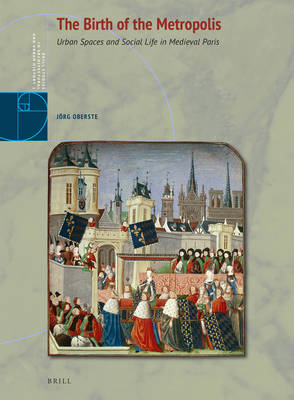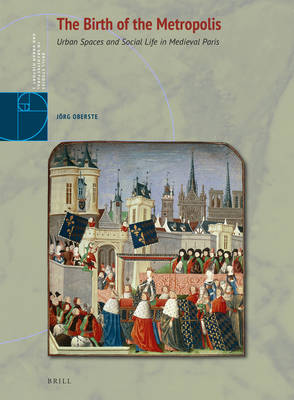
- Afhalen na 1 uur in een winkel met voorraad
- Gratis thuislevering in België vanaf € 30
- Ruim aanbod met 7 miljoen producten
- Afhalen na 1 uur in een winkel met voorraad
- Gratis thuislevering in België vanaf € 30
- Ruim aanbod met 7 miljoen producten
Zoeken
Omschrijving
Between 1150 and 1350, Paris grew from a mid-sized episcopal see in Europe to the largest metropolis on the continent. The population rose during these two centuries from approximately 30,000 to over 250,000 inhabitants. The causes and consequences of this demographic explosion are thoroughly examined for the first time in this book by Jörg Oberste.
As it turns out, the management of urban space is key to understanding one of the most dynamic processes of urbanisation in pre-modern Europe: Who decides on the new construction of streets, squares, and houses? From whence does the multitude of new inhabitants come? What are the consequences of this massive wave of immigration on urban society, the economy, and the keeping of the peace? What kind of self-understanding evolves from the heterogeneous construct of the rapidly growing city, and what kind of external perceptions is late medieval Paris able to create? When does the myth of the "magical city on the Seine" (Heinrich Heine), perpetuated to the present day, come to be born? Oberste's extensive investigation of the pertinent and wide-ranging medieval sources sheds new light on these and other questions related to the significant expansion of the City of Lights in the Middle Ages.
As it turns out, the management of urban space is key to understanding one of the most dynamic processes of urbanisation in pre-modern Europe: Who decides on the new construction of streets, squares, and houses? From whence does the multitude of new inhabitants come? What are the consequences of this massive wave of immigration on urban society, the economy, and the keeping of the peace? What kind of self-understanding evolves from the heterogeneous construct of the rapidly growing city, and what kind of external perceptions is late medieval Paris able to create? When does the myth of the "magical city on the Seine" (Heinrich Heine), perpetuated to the present day, come to be born? Oberste's extensive investigation of the pertinent and wide-ranging medieval sources sheds new light on these and other questions related to the significant expansion of the City of Lights in the Middle Ages.
Specificaties
Betrokkenen
- Auteur(s):
- Uitgeverij:
Inhoud
- Aantal bladzijden:
- 288
- Taal:
- Engels
- Reeks:
- Reeksnummer:
- nr. 1
Eigenschappen
- Productcode (EAN):
- 9789004465282
- Verschijningsdatum:
- 1/10/2021
- Uitvoering:
- Hardcover
- Formaat:
- Genaaid
- Afmetingen:
- 193 mm x 260 mm
- Gewicht:
- 930 g

Alleen bij Standaard Boekhandel
+ 433 punten op je klantenkaart van Standaard Boekhandel
Beoordelingen
We publiceren alleen reviews die voldoen aan de voorwaarden voor reviews. Bekijk onze voorwaarden voor reviews.











